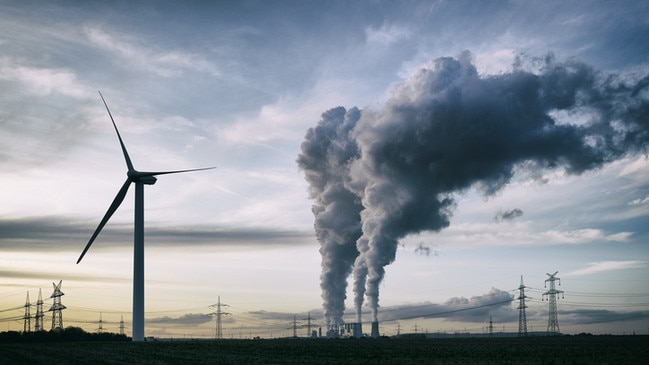The risks of going ‘green’: late entry into a hot sector can turn any investor pale
One of the surprises of the reporting season was surely the speed at which corporate Australia is trying to turn green.

Even within the narrow confines of the global resources industry, the “green” factor becomes ever more urgent as the Biden administration moves to set its stamp on environmental planning — this week’s delay on a major US copper mine from BHP and Rio Tinto may be just the start.
As the major miners try to reshape under these new conditions, more nimble players such as Fortescue are getting institutional investors’ approval with initiatives such as the Fortescue Future Industries plan, in which the iron ore company plans to spend 10 per cent of its annual profits on clean energy generation, especially green hydrogen.
Meanwhile, as The Australian’s Nick Evan has reported, several mining companies such as OZ Minerals and South32 have combined in the Electric Mine Consortium in order to pool their technology resources as mines move to renewable energy.
For some, these moves by miners to turn green are seen as a double standard: taken to its logical conclusion, might we ultimately have coal miners powered by solar and wind? Perhaps we will. What’s more, if we do, it will be because management in the resources industry are as pragmatic as any other field of industrial activity — they cannot afford to be left behind with “stranded assets” or outdated energy facilities.
Unfortunately, on the ASX pure green investments are mostly speculative small-cap stocks.
But in the funds management sector there is also a “race” to get in front of investors.
For most investors this means exchange-traded funds, where overseas markets have offered an ever-widening menu. At home, the latest cab off the rank is the VanEck Vectors Clean Energy ETF, which will track the S&P Global Clean Energy Index.
As VanEck explains, this index was up by 116 per cent last year, which in the world of low-fee, steady-as-she-goes ETFs is a remarkable number.
The Clean Energy ETF joins a handful of funds already making headway in the local market such, as the BetaShares Global Sustainability ETF with a market capitalisation of $1.1bn and which is up about 5 per cent this year to date.
Investment professionals servicing younger clients are more often aware that “green” investing is one of the hottest areas of the market, and whether that’s due to pure altruism or fear of missing out barely matters when the funds are flowing in.
At sites such as CommSec, the most popular overseas stock is diversified electric car maker Tesla, which is up fourfold since this time last year.
However, it is when you move to broking sites where the client base is younger, such as Stake — the overseas shares website dominated by Millennials. New data shows that funds flowing into “renewable stocks” in the last three months is up sixfold on the previous three months. A standout favourite among Stake clients is SOL — ReneSola, the green energy products manufacturer, up ninefold since October last year.
For investors the risk of investing in green stocks as a theme is unavoidable: in small-cap stocks or hotly favoured individual overseas shares, the volatility is high and prices can move dramatically in either direction.
Similarly, among specialist ETFs the danger is that the manager is jumping on a trend that is well under way and prices are already well ahead of reality.




One of the surprises of the reporting season was surely the speed at which corporate Australia is trying to turn “green”. In fact, the efforts in the CEO suite may only be matched by the speed at which the market is creating “green” products to satisfy investor appetites.